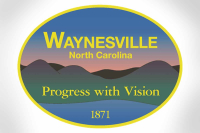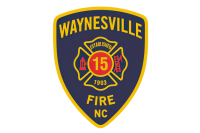Jackson County Rec ’Archery 101’ course
Kids ages 10-14 in Jackson County will have the chance to learn the ins and out of archery.
The course will be held from 5-8 p.m. May 30 at the Cashiers/Glenville Recreation Center.
Jackson County Rec hosts youth ‘Archery 101’ course
Kids ages 10-14 in Jackson County will have the chance to learn the ins and out of archery.
The course will be held from 2-5 p.m. May 17 at the Cashiers/Glenville Recreation Center.
Jackson County hosts ‘Archery 101’ class
The Jackson County Recreation Department has announced it will host an “Archery 101” class for kids ages 10-14.
HCC hosts conservation heritage event
Haywood Community College, in partnership with the North Carolina Wildlife Resources Commission are hosting an event on the campus of Haywood Community College to celebrate our national conservation heritage.
Saddle up: Cataloochee Ranch rides into next chapter
Meandering up Fie Top Road in Maggie Valley, just as your vehicle’s engine is pushed to the limit and it seems you may eventually drive off the edge of the earth, you emerge atop a mountain ridge, a large rustic lodge appearing in the distance — the Cataloochee Ranch.
Shoot sharp
Learn the fundamentals of archery during a youth program 10 a.m. to 2 p.m. Saturday, March 9, at the Cashiers/Glenville Recreation Center.
Following the arrow: Bowed Up Outdoors expands offerings, serves growing archery community
 Walk into Bowed Up Outdoors, and the first thing you’ll notice is the friendly banter moving back and forth between customers seated at the stools in front of the gun counter and the staff on the other side of it. Then, your eyes will wander to the lineup of rifles hung on the wall behind the counter and travel past the rows of shooting accessories to the back wall, hung with a variety of bows — compound, recurve and long. An eight-lane indoor shooting range is hidden behind that wall, giving the Maggie Valley shop a claim to fame among counties west of Buncombe.
Walk into Bowed Up Outdoors, and the first thing you’ll notice is the friendly banter moving back and forth between customers seated at the stools in front of the gun counter and the staff on the other side of it. Then, your eyes will wander to the lineup of rifles hung on the wall behind the counter and travel past the rows of shooting accessories to the back wall, hung with a variety of bows — compound, recurve and long. An eight-lane indoor shooting range is hidden behind that wall, giving the Maggie Valley shop a claim to fame among counties west of Buncombe.
Archery lessons with James Dickey
During the course of a recent interview for a literary magazine, I was asked: While in grad school at the University of South Carolina, you began an association with James Dickey. What was it like to hang out with one of the leading poets of the day?”
Dickey was, in fact, a major American poet of the 20th century. And he was, of course, the author of the novel Deliverance (1970), which was, in turn, made into a movie filmed in north Georgia, Western North Carolina, and northwest South Carolina.
For many, Deliverance (both the book and the film) endures as a notorious item in regard to its sensationalized depiction of the region’s culture.
The James Dickey part of the interview has been relegated to the cutting room floor, as it were. But I suppose it won’t hurt to get my impressions (as a minor footnote) on record, especially those regarding archery, since bow hunting has such a significant role in Deliverance. I knew Dickey in the pre-Deliverance era … before things apparently got out of hand in his personal life to a significant degree. The dialogue in the interview is an approximation of what was said forty-some years ago.
•••
“Hanging out” is a good way to describe our “association.” It certainly wasn’t literary. I’ve never written anything or had much to say about James Dickey. We met I’m pretty sure in the fall of 1968. The English Department had moved into a new building … but they didn’t have enough professors to occupy two floors so they assigned exceptionally nice offices to the grad assistants to keep another department from occupying them. Not long after I moved in, I heard a loud voice in the corner office next to mine say something like, “If you don’t pay me a thousand dollars I’m not coming.” After a pause, the voice said something like, “One thousand … plus expenses … take it or leave it.” I glanced into the office and saw a good-sized fellow in his mid-40s standing up holding a telephone. It was James Dickey negotiating an appearance fee. I was impressed by the amount he was demanding ... a thousand dollars was a lot of money in the late 1960s.
Not long thereafter we crossed paths and started talking. He introduced himself. I knew who James Dickey was, of course. I had read Buckdancer’s Choice (which had won the National Book Award) but didn’t mention it.
Dickey said something like, “Jim Meriwether says you played football at North Carolina. You don’t look like a football player. Were you any good?” James B. Meriwether, the Faulkner scholar, had been at UNC in the early 1960s. I had more or less followed him to USC.
I said something like, “I was OK until I got hurt.”
He said something like, “I got hurt, too.” I think he played football at Clemson but we never talked much, if any, about football. I don’t know if Dickey ever boxed or not … to me, he had the look of a prize fighter in his facial features, rounded shoulders, and shambling gait.
I do know for certain that he was a skilled archer. He asked me the first day we talked if I had ever shot with a bow at an outdoor range. When I said I hadn’t, he offered to loan me some equipment and give me “a few lessons” … by which he meant he was going to get me up and running and then beat the crap out of me.
A new archery course had been established a few miles outside Columbia in the piney woods. It was something like a golf course with targets of different sizes laid out at different distances that required different trajectories. Dickey had a low key way of explaining and demonstrating bracing a bow; posture; notching, drawing, sighting, and loosing arrows; and so on. He said the “loosing” or instinctive moment of release is “the mystic part” … which I found to be true.
I quickly discovered that one of the reasons for having a companion when shooting arrows is to have help finding the ones that miss the target and the bale of hay on which it is mounted. More time is spent hunting arrows than shooting them. The more eyes the better. Losing arrows is frustrating and expensive. Dickey demonstrated how to straighten aluminum arrows in a vice grip or with a special hand tool or “if need be” with your thumbs; how to cut new arrow shafts from a lengthy section of tubing; and how to point, noch, and fletch the shaft. In retrospect, he clearly liked teaching archery as much as he did doing it ... maybe more.
I got hooked and he helped me upgrade my equipment … even giving me some of his used stuff. Meanwhile he was trouncing me every time we shot a round. In those days I was as competitive as Dickey … so I started going out by myself or with my wife, Elizabeth, practicing. She became a good shot and I started just about holding my own with Dickey.
He looked at me one day and said, “You’ve been practicing. That’s cheating.”
I didn’t say anything. But the next time we went to the range I noticed right away that his skills had increased exponentially. Every shot was on target.
About half way through the round, I said, “You’ve been practicing.”
He grinned and said something like, “Shut up and shoot.”
Dickey liked practical jokes, and he liked challenging people to see how they reacted. It was a macho thing … but he was genuinely interested in how different people responded. One day when we were walking through some scrub palmetto he froze and exclaimed, “Rattlesnake! … right there beside your foot.”
When he realized that I wasn’t amused, he apologized. Well, he didn’t exactly apologize for having done it … he just said he wouldn’t do it again.
Deliverance was published in 1970 … so he must have been working on it at that time … but he never mentioned the novel. The only literary discussion we ever had that I can remember now was about Richard Jeffries. Our discussion … if you can call it that … took place in about 60 seconds at a picnic table on the way back to Columbia from the archery range.
Jeffries was the British naturalist who wrote an autobiography titled The Story of My Heart published in 1883. Dickey really liked the book. I thought it was overly romanticized and, in places, downright trite. Somewhat miffed, he asked which of the British naturalists I preferred. When I said “W.H. Hudson,” he replied, “Hudson doesn’t count. He was a South American,” which was, of course, quibbling since the major part of Hudson’s life had been spent in England writing about the English countryside.
We bought snacks and something to drink at a roadside bait shop that offered seemingly endless varieties of everything from peanut butter crackers to bubblegum to rods and reels. This stimulated most of our discussions at the picnic table, which were centered around intricate mock-plans to “retreat” from “the halls of academe” and open a bait shop on Lake Murray. This was tomfoolery, of course, but we enjoyed horsing around. We were, in that regard, on the same wavelength.
Most of the James Dickey discussions I’ve overheard through the years have been disparaging in one way or another. When I knew him in the late 1960s he was fun to be with. He had a boyish smile and liked to laugh. He wasn’t an academic or literary snob. He was a pretty good listener. He was a talented bow-and-arrow coach … but not a very good loser.
And he was always a terrific poet. These lines are excerpted from James Dickey’s The Heaven of Animals (1961):
Having no souls, they have come
Anyway, beyond their knowing ...
Their instincts wholly bloom
And they rise.
The soft eyes open ...
And those that are hunted
Know this as their life,
Their reward: to walk
Under such trees in full knowledge
Of what is in glory above them,
And to feel no fear …
They fall, they are torn,
They rise, they walk again.
George Ellison wrote the biographical introductions for the reissues of two Appalachian classics: Horace Kephart’s Our Southern Highlanders and James Mooney’s History, Myths, and Sacred Formulas of the Cherokees. In June 2005, a selection of his Back Then columns was published by The History Press in Charleston as Mountain Passages: Natural and Cultural History of Western North Carolina and the Great Smoky Mountains. Readers can contact him at P.O. Box 1262, Bryson City, N.C., 28713, or at This email address is being protected from spambots. You need JavaScript enabled to view it..





